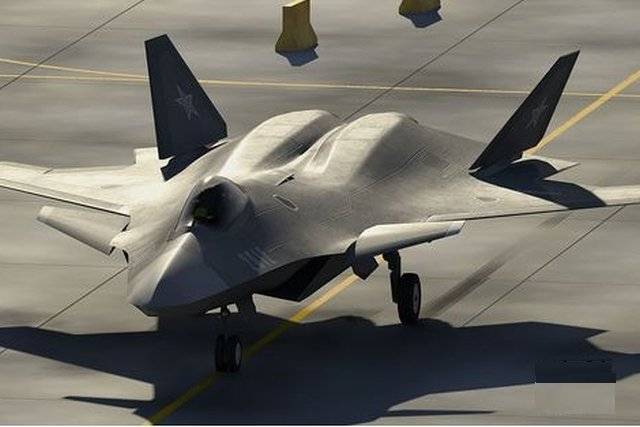China has shown off what it says is the world's first fighter jet from the sixth generation.

|
| "Dark Sword" Unmanned Fighter Dubbed a "Nightmare" for the United States |
A little over a year after China's first fifth-generation fighter, the J-20 heavy air superiority platform, went into service and made China the second country in the world after the United States to develop such an aircraft, the People's Liberation Army has shown off what is thought to be the world's first sixth-generation combat aircraft. Up until the middle of the 2000s, Chinese military aviation was far behind its Russian and American counterparts in terms of technology. However, the rate at which it has developed has put it on par with the two major producers that have been around for a long time, and Chinese fifth-generation fighters threaten to be much better than their Russian and American counterparts in both quality and quantity.
The Dark Sword could enter service alongside the country's growing fleet of next generation manned combat aircraft in the near future

|
| "Dark Sword" unmanned fighter |
Both Russia and the U.S. have put a lot of money into making a sixth-generation air superiority fighter. Russia plans to add next-generation technologies to future versions of its Su-57 stealth fighter, while also making new fighters and interceptors for the role. The U.S., meanwhile, is working on a replacement for the F-22 Raptor program, which was canceled too soon, as part of its "Air Dominance Initiative."
China, on the other hand, seems to have a possible lead over its two main competitors, Russia and the United States. It is still very likely that China's next-generation platform could go into service sooner and with better technology than those of Russia and the United States.
The Dark Sword is the name of China's new fighter plane, which was unveiled as an unmanned combat platform. It will soon join the country's growing fleet of next-generation manned fighter planes.
In the early 2000s, the U.S. tried out an unmanned fighter. Northrop Grumman built the X-47B technology demonstrator as an advanced carrier-based platform for the U.S. Navy. However, the program didn't work out very well, so it was quickly canceled. Sixth-generation fighters from the U.S. and Russia are likely to be able to fly both with and without pilots. The Dark Sword program could include both types, or it could be an unmanned fighter that will be used alongside manned platforms. When a fighter is unmanned, it is vulnerable to electronic attacks, but it also has a lot of benefits, such as a much higher level of maneuverability that would kill the pilots of manned combat aircraft.
The Dark Sword has China's most advanced AAMs. It could fly faster than sound over long distances.
The Dark Sword is also likely to have the most advanced air-to-air missiles made in China and to be able to fly at speeds several times faster than sound over long distances. This would make it a deadly threat to enemy platforms in the South and East China Seas and a potentially priceless asset. The platform could still be used for reconnaissance, ship hunting, and long-range strike missions.

|
| "Dark Sword" unmanned fighter |
One big possibility is that the Dark Sword, which is an early sixth-generation platform, will be used as a testbed for next-generation technologies and as a light, less expensive support plane to go with heavier fighters like the J-20 and its sixth-generation successors. The features of a sixth-generation combat aircraft haven't been decided yet, but they are likely to include laser weapons, laser-based anti-missile defense systems, and new engine technologies that make the planes go faster and travel farther.
Assuming a range similar to that of the U.S. Navy's Triton heavy surveillance drone, which the Dark Sword is likely to far exceed, the fighter would be able to attack hostile targets in Japan and much of South East Asia from airbases on the mainland. This would make China's already powerful anti-access area denial capabilities in the East and South China Seas even stronger. China's carrier fleet is growing quickly, so developing an unmanned fighter for carrier operations to improve the PLA Navy's ability to project power is still a very real possibility.

